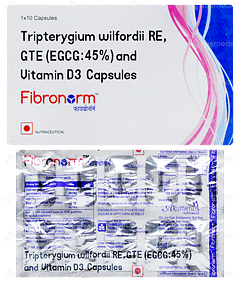Multiple Sclerosis
Multiple sclerosis (MS) is a chronic autoimmune disease, affecting the central nervous system. In MS, the immune system mistakenly attacks the protective covering of nerve fibres, known as myelin. This damage disrupts communication between the brain and the rest of the body, leading to various symptoms. While the exact cause of MS is unknown, it is believed to be an autoimmune disorder with possible genetic, environmental, and infectious triggers.
Last updated on : 16 Dec, 2024
Read time : 13 mins

Overview of Disease
Multiple sclerosis, also known as disseminated sclerosis, is a complex and disabling autoimmune disease that primarily affects the central nervous system (CNS). The CNS, which includes the spinal cord, brain, and optic nerves, plays a crucial role in controlling various bodily functions.
In individuals with MS, the immune system mistakenly attacks the protective covering of nerve cells, called myelin. It leads to communication problems between the brain and the rest of the body. This can result in a wide array of multiple sclerosis symptoms, and can significantly impact a person's quality of life. Understanding the causes, diagnosis, and available multiple sclerosis treatment options is essential for effectively managing this condition.
What Is Multiple Sclerosis?
Multiple sclerosis is an autoimmune disease that affects the central nervous system, including the brain, spinal cord, and optic nerves. In MS, the immune system erroneously attacks the myelin sheath, the protective layer surrounding the nerve fibers. This damage to the myelin sheath disrupts the communication between the brain and the rest of the body. This leads to a variety of multiple sclerosis symptoms such as vision problems, muscle weakness, numbness, tingling, and cognitive difficulties.
The exact cause of multiple sclerosis is still unknown, but it is believed to be an autoimmune disorder. Researchers think it may be triggered by a combination of genetic, environmental, and infectious factors. While MS has no cure, various treatments can manage symptoms and slow disease progression. Early multiple sclerosis diagnosis is crucial for effective management of the condition.
Key Factors about Multiple Sclerosis
| Category | Details |
| Also Referred as | MS, Multiple cerebral sclerosis, multiple cerebrospinal sclerosis, disseminated sclerosis, encephalomyelitis disseminata |
| Commonly Occurs In | Young adults, typically between the ages of 20 and 40, more common in women than men |
| Affected Organ | Central Nervous System (CNS), including the brain and spinal cord |
| Type | Relapsing-remitting MS (RRMS), Secondary progressive MS (SPMS), Primary progressive MS (PPMS), Progressive-relapsing MS (PRMS) |
| Common Signs | Vision problems, numbness, vertigo, muscle weakness, spasticity, fatigue, bladder and bowel problems, cognitive impairment |
| Consulting Specialist | Neurologist |
| Treatement Procedures | Disease-modifying therapies (DMTs), symptomatic treatments, acute relapse treatment with corticosteroids like methylprednisolone |
| Managed By | Beta interferons, Glatiramer acetate, Ocrelizumab, Fingolimod, Dimethyl fumarate |
| Mimiciking Condition | Other autoimmune or infectious conditions, such as neuromyelitis optica spectrum disorder |
Types of Multiple Sclerosis
There are several types of multiple sclerosis, which include:
Relapsing-Remitting MS (RRMS): This is the most common type of multiple sclerosis disease, accounting for approximately 85% of initial MS diagnoses. RRMS is characterised by clearly defined attacks or relapses, followed by periods of partial or complete recovery, known as remissions. During remission, multiple sclerosis symptoms may disappear or decrease in severity.
Primary-Progressive MS (PPMS): It is characterised by a steady progression of symptoms from the onset of the disease, without any distinct relapses or remissions. PPMS affects approximately 10-15% of individuals with multiple sclerosis.
Secondary-Progressive MS (SPMS): This type of MS typically develops after an initial period of RRMS. In SPMS, the disease continues to worsen over time, with or without the presence of relapses. Many people with RRMS will eventually transition to SPMS.
Progressive-Relapsing MS (PRMS): This is a rare type of multiple sclerosis, affecting less than 5% of individuals with MS. PRMS is characterised by a steady progression of symptoms from the beginning, with occasional acute relapses but no periods of remission.
Early Signs of Multiple Sclerosis
The first signs of multiple sclerosis often include:
Vision problems, such as blurred vision, double vision, or pain when moving the eyes
Numbness or tingling in one or more limbs
Fatigue and weakness in the arms or legs
Balance and coordination issues, including dizziness and clumsiness
Muscle spasms and stiffness
Symptoms of Multiple Sclerosis
Multiple sclerosis (MS) symptoms can differ greatly among individuals, depending on where and how severely nerve fibres are damaged. Common symptoms include:
Numbness or weakness in one or more limbs, generally affecting one side of the body at a time.
Tingling or electric shock-like sensations triggered by certain neck movements, especially when bending the neck forward (Lhermitte sign).
Vision problems, such as blurred vision, double vision, or loss of vision in one eye
Muscle weakness, stiffness, and spasms that can affect walking or standing
Fatigue, which can be constant or triggered by physical activity
Coordination and balance problems, including dizziness and unsteady gait
Cognitive difficulties, such as issues with memory, concentration, and judgment
Bladder and bowel problems, including incontinence and constipation
Sexual dysfunction, which can include erectile dysfunction and decreased libido
Mood changes, such as depression, anxiety, and mood swings
Speech difficulties, including slurred speech
Hearing loss in some cases
Causes of Multiple Sclerosis
The exact causes of multiple sclerosis are unknown, but researchers believe it arises from a combination of genetic, environmental, and infectious factors. In MS, the body's immune system mistakenly attacks the protective myelin sheath that covers nerve fibres. This disrupts communication between the brain and the rest of the body.
Certain genetic variations have been associated with an increased risk of developing multiple sclerosis, suggesting a hereditary component.
Environmental factors, such as low vitamin D levels and smoking, have also been linked to a higher likelihood of MS.
Additionally, some studies propose that viral infections, particularly the Epstein-Barr virus, may trigger the immune response that leads to multiple sclerosis.
Ongoing research aims to further elucidate the complex interplay of factors contributing to MS development. This could inform new strategies for multiple sclerosis diagnosis, prevention, and targeted MS therapy.
Risk Factors
Several factors can increase an individual's risk of developing multiple sclerosis (MS), including:
Genetic Factors: While MS is not directly inherited, having a family history of the disease does increase risk. Specific genetic variants, particularly those on chromosome 6p21, are more common in people with MS.
Environmental Factors: Living in cooler climates far from the equator is associated with a higher risk of MS. Migration studies indicate that moving to a high-risk area before adolescence can increase an individual's chances of developing the condition.
Vitamin D Deficiency and Limited Sun Exposure: Low levels of vitamin D, often resulting from reduced sun exposure, are linked to a higher risk of MS and more severe disease progression.
Smoking: Cigarette smoking significantly increases the likelihood of developing MS and can lead to a worse prognosis and faster progression of the disease.
Infections: Certain viral infections, such as Epstein-Barr virus (EBV), have been associated with an elevated risk of MS.
Obesity: Being obese during adolescence, especially for females, is linked to a higher risk of developing MS later in life.
Sex Hormones: Women are more than twice as likely as men to develop relapsing-remitting MS, possibly due to the effects of hormones like estrogen and testosterone.
Other Autoimmune Conditions: Having pre-existing autoimmune diseases, such as thyroid disorders, type 1 diabetes, or inflammatory bowel disease, can slightly increase the risk of MS.
Geographic and Ethnic Factors: MS is more prevalent among white individuals of Northern European descent and those living in regions with temperate climates.
Complications
MS can lead to various complications that significantly impact a person's quality of life, including:
Muscle Weakness and Spasticity: MS can cause muscle weakness, stiffness, and painful spasms, affecting mobility and daily activities.
Fatigue: Overwhelming fatigue is one of the most common and debilitating symptoms of MS, often interfering with work, social life, and overall functionality.
Bladder and Bowel Dysfunction: MS can disrupt the nerves controlling the bladder and bowels, leading to urinary incontinence, retention, and constipation.
Sexual Dysfunction: Both men and women with MS may experience sexual difficulties, such as reduced libido, erectile dysfunction, and decreased sensation.
Cognitive Impairment: MS can affect cognitive functions, including memory, attention, problem-solving, and information processing speed.
Depression and Emotional Changes: The challenges of living with a chronic condition like MS can lead to depression, mood swings, and other emotional disturbances.
Pain: MS can cause various types of pain, including neuropathic pain, musculoskeletal pain, and headaches.
Vision Problems: Optic neuritis, an inflammation of the optic nerve, is a common complication of MS that can cause vision loss, blurred vision, and eye pain.
Mobility Issues: As the disease progresses, individuals with MS may require assistive devices, such as canes, walkers, or wheelchairs, to maintain mobility.
Secondary Conditions: MS can increase the risk of developing other health issues, such as osteoporosis, pressure sores, and respiratory infections.
Prevention of Multiple Sclerosis
At present, there is no known way to prevent the onset of multiple sclerosis. However, researchers are studying several factors that may potentially reduce the risk or slow the progression of the disease. While not preventive, maintaining a healthy lifestyle can help manage symptoms in individuals with MS. Regular exercise, a balanced diet, and avoiding smoking also promote overall health.
Certain environmental and infectious factors are under investigation as potential triggers for multiple sclerosis. However, there is currently no clear guidance on how to prevent the disease by avoiding these factors. Despite no definitive prevention, ongoing research seeks strategies to reduce the incidence and impact of this complex neurological condition.
Diagnosis & Tests
Diagnosing multiple sclerosis can be challenging, as the symptoms can vary widely and mimic those of other neurological conditions. A comprehensive diagnostic approach typically involves the following:
Medical History and Neurological Examination: A thorough evaluation of an individual's medical history, including symptoms, family history, and lifestyle factors, is crucial in assessing MS. A detailed neurological examination also helps determine the likelihood of the condition.
Magnetic Resonance Imaging (MRI): MRI scans of the brain and spinal cord can detect lesions or scarring (sclerosis) in the white matter. The McDonald Criteria, a set of diagnostic guidelines, rely heavily on MRI findings to confirm an MS diagnosis.
Cerebrospinal Fluid (CSF) Analysis: A lumbar puncture, or spinal tap, may be performed to collect a sample of CSF. The presence of oligoclonal bands and elevated levels of certain proteins in the CSF can indicate an immune response consistent with MS.
Evoked Potential Tests: These tests measure the electrical activity in the brain in response to visual, auditory, or sensory stimuli. Abnormal results can indicate damage to the nerve pathways, supporting an MS diagnosis.
Blood Tests: There is no specific blood test for MS, but blood work can help rule out other conditions with similar symptoms. These conditions include vitamin deficiencies, infections, or other autoimmune disorders.
Optical Coherence Tomography (OCT): This non-invasive imaging technique can assess the thickness of the retinal nerve fibre layer. It may be reduced in individuals with MS due to optic nerve damage.
Treatment & Management
Multiple sclerosis treatment is a multifaceted approach aimed at managing symptoms and reducing the frequency and severity of relapses. It also focuses on slowing disease progression. This comprehensive strategy includes disease-modifying therapies, acute relapse management, symptom management, and rehabilitation activities.
1. Disease-Modifying Therapies (DMTs)
DMTs are a key aspect of MS treatment, targeting the immune system to reduce inflammation and prevent further damage to the central nervous system. These treatments are available in various forms, including:
- Injections
- Oral medications
- Intravenous infusions
Examples of DMTs include:
- Beta interferons
- Glatiramer acetate
- Ocrelizumab
- Fingolimod
- Dimethyl fumarate
2. Acute Relapse Management
For managing acute relapses, corticosteroids such as methylprednisolone are commonly used to reduce inflammation and hasten recovery. In cases of severe relapses that do not respond to corticosteroids, plasma exchange (plasmapheresis) may be employed.
3. Symptom Management
Effective symptom management is another crucial aspect of MS therapy. Medications and treatments are used to address specific issues, including:
- Muscle stiffness and spasms
- Fatigue
- Depression
- Bladder problems
4. Rehabilitation Activities
Rehabilitation activities play a vital role in helping patients maintain or regain functional abilities. These may include:
- Physiotherapy
- Occupational therapy
- Cognitive rehabilitation
Additionally, mobility aids, home adaptations, and psychological support are essential components in the comprehensive management of multiple sclerosis.
When to See a Doctor?
If you or someone you know suspects the presence of multiple sclerosis, it is essential to seek medical attention promptly. Symptoms such as vision problems, muscle weakness, balance issues, numbness, or tingling sensations can indicate the development of MS. These symptoms warrant a thorough evaluation by a healthcare professional to determine the underlying cause and initiate appropriate treatment.
Individuals with multiple sclerosis should maintain regular follow-up appointments with their healthcare team to monitor disease progression. These appointments also allow for adjustments to treatment plans and addressing any new or worsening symptoms. Prompt medical attention can help minimise the impact of MS on daily life and optimise long-term outcomes.
Key Takeaways
Multiple sclerosis is a chronic autoimmune disease affecting the central nervous system with no known cure.
Treatment for MS focuses on managing symptoms, reducing relapses, and slowing disease progression through disease-modifying therapies, symptomatic treatments, rehabilitation, and lifestyle changes.
While there are no proven ways to prevent MS, ongoing research aims to identify potential risk-reduction strategies.
Recognising the signs and symptoms of MS and seeking prompt medical attention is crucial for early diagnosis and effective management of the condition.
FAQs
What are the effects of multiple sclerosis on the body?
MS, an autoimmune disorder affecting the central nervous system, causes damage to the myelin sheath. This disrupts nerve signal transmission and leads to various symptoms such as muscle weakness, vision changes, numbness, fatigue, and cognitive issues.
Can multiple sclerosis be cured completely?
While there is no cure for MS, various treatments can help manage symptoms and slow disease progression. These treatments can also improve quality of life and include medications, rehabilitation, and lifestyle adjustments.
How does multiple sclerosis impact life expectancy?
People with MS generally have a life expectancy about 7 years shorter than those without the disease. This is primarily due to manageable or preventable complications with proper care.
Is it possible to lead an active, normal life with multiple sclerosis?
Many people with MS can lead full, active lives with support from their healthcare team and appropriate treatment options. They can also use lifestyle adjustments, mobility devices, home adaptations, and rehabilitation activities to maintain independence.
Is it possible for a person to recover from multiple sclerosis?
MS is a chronic condition without a complete reversal, but many people experience remission periods where symptoms improve or disappear. Treatment can help manage symptoms and reduce the frequency of relapses.
At what age does multiple sclerosis typically begin?
Multiple Sclerosis most commonly develops between the ages of 20 and 40. However, it can occur at any age, including in children and older adults.
Does multiple sclerosis disease stop progressing with age? age?
MS progression does not necessarily stop with age, and symptoms can worsen over time. However, the rate of progression varies among individuals, with some experiencing a more gradual decline.
Can early diagnosis and treatment stop the progression of multiple sclerosis?
Early diagnosis and treatment of MS can help slow the disease's progression and manage symptoms, but it cannot completely stop the condition from advancing.
References
National Institute of Neurological Disorders and Stroke. (2023, April 6). Multiple sclerosis: Hope through research. https://www.ninds.nih.gov/health-information/patient-caregiver-education/hope-through-research/multiple-sclerosis-hope-through-research
National Multiple Sclerosis Society. (n.d.). What is MS? https://www.nationalmssociety.org/What-is-MS
Filippi, M., Bar-Or, A., Piehl, F., Preziosa, P., Solari, A., Vukusic, S., & Rocca, M. A. (2018). Multiple sclerosis. Nature Reviews Disease Primers, 4(1), 1-27. https://doi.org/10.1038/s41572-018-0041-4
Brownlee, W. J., Hardy, T. A., Fazekas, F., & Miller, D. H. (2017). Diagnosis of multiple sclerosis: Progress and challenges. The Lancet, 389(10076), 1336-1346. https://doi.org/10.1016/S0140-6736(16)30959-X
Johns Hopkins Medicine. (n.d.). Multiple sclerosis (MS). https://www.hopkinsmedicine.org/health/conditions-and-diseases/multiple-sclerosis-ms
National Health Service. (2024, August 16). Multiple sclerosis (MS). NHS. https://www.nhs.uk/conditions/multiple-sclerosis/
Check Related Salts
Latest health articles
Top Health Essentials
Disclaimer
Top-Selling Medicines:
...View more
Top-OTC medicines:
...View more
Company
About UsHealth ArticleHealth StoriesDiseases & Health ConditionsAll MedicinesAll BrandsNeed HelpFAQSubscribe
Registered Office Address
Grievance Officer
Download Truemeds

Contact Us
Our customer representative team is available 7 days a week from 9 am - 9 pm.
v3.7.8
Our Payment Partners























































